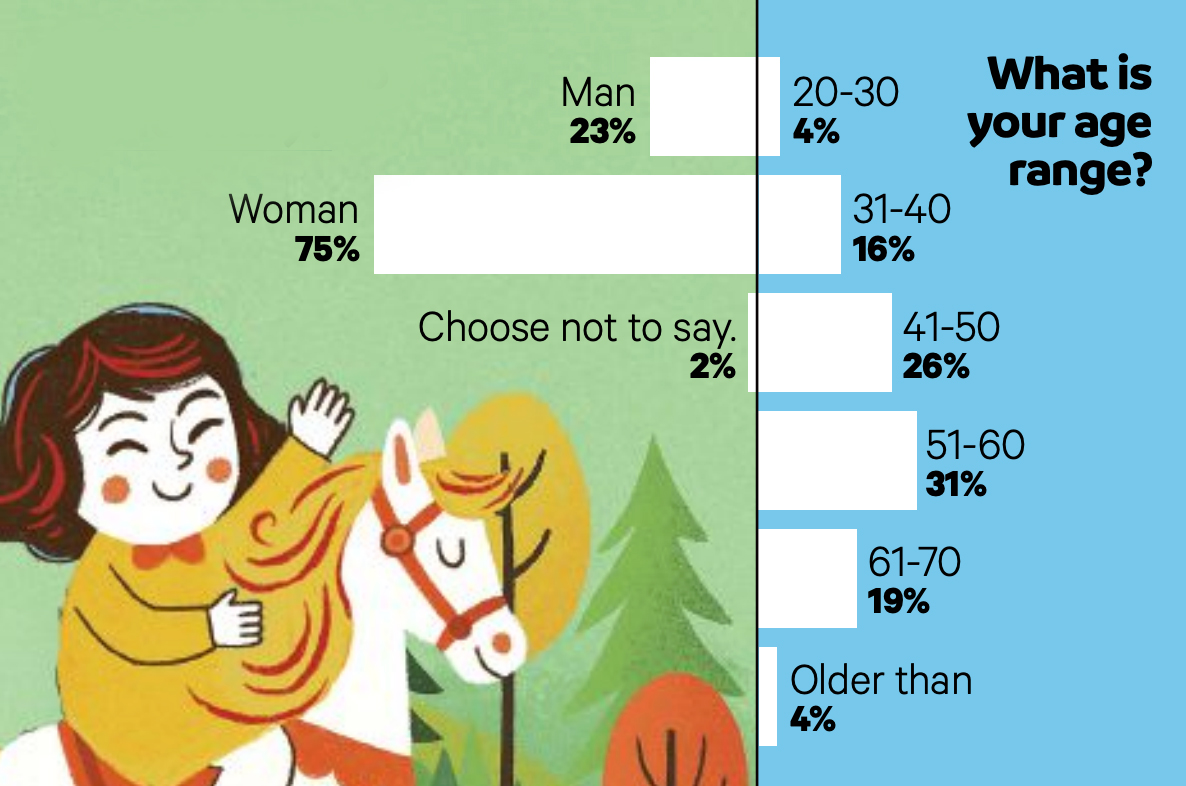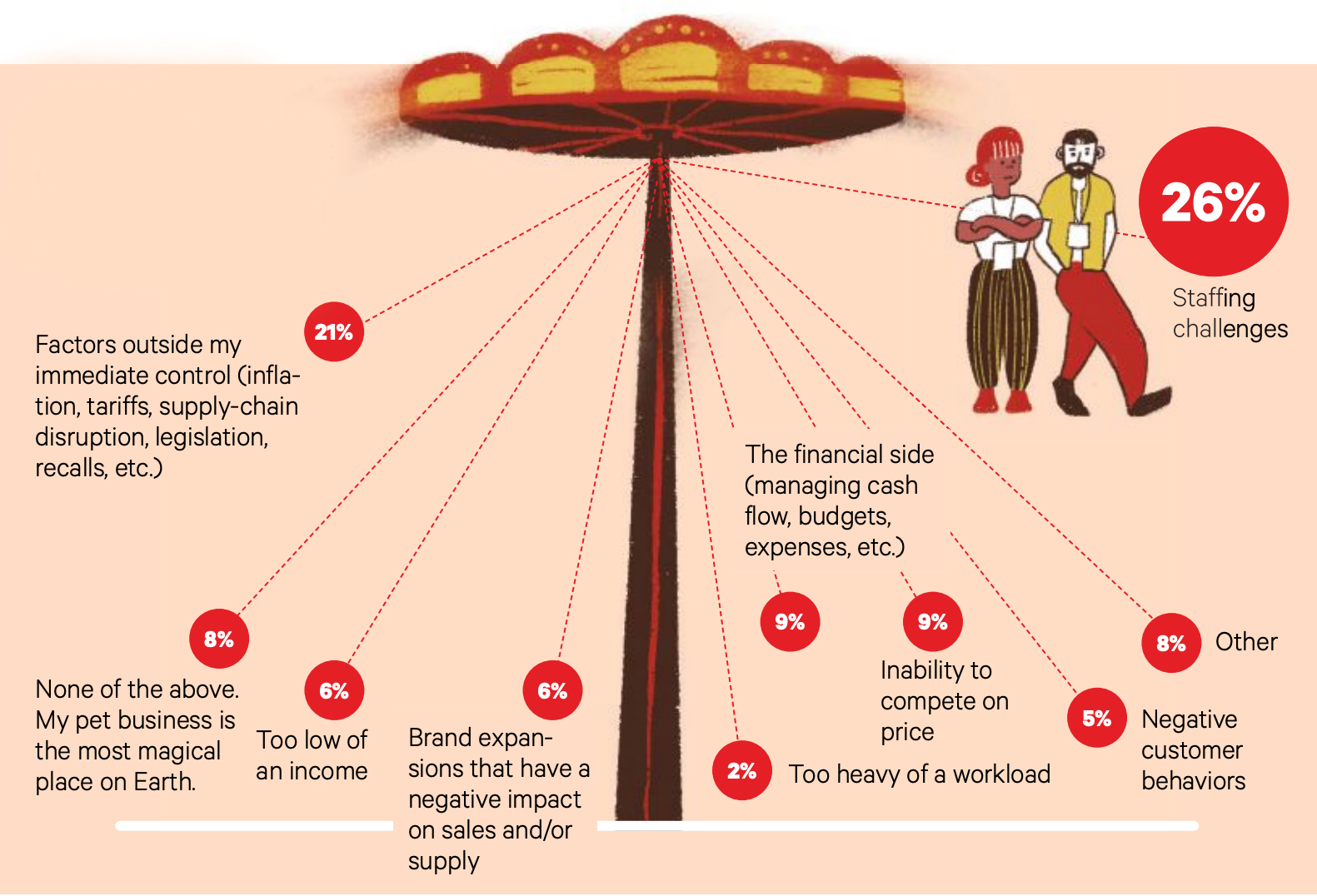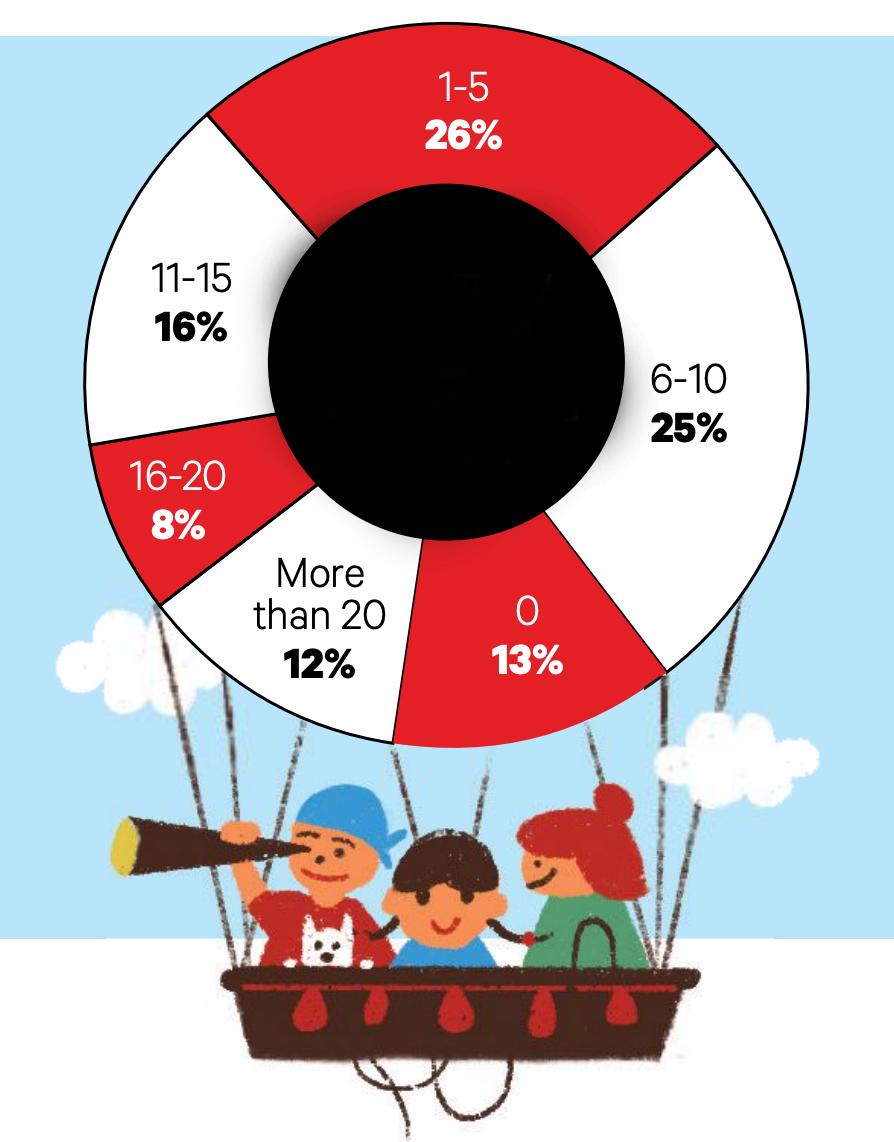Gender: How do you identify?

Race or ethnicity: How do you identify?
American Indian or Alaskan Native
|
|
1%
|
| Asian |
|
3%
|
Black or African American
|
|
1%
|
| Hispanic or Latin |
|
5%
|
| Multiracial |
|
2%
|
| Native Hawaiian or other Pacific Islander |
|
1%
|
| White |
|
83%
|
| I choose not to say. |
|
4%
|
If you are the owner, what did you earn (salary + share of profit) in 2024?
Earnings were negative
|
|
4%
|
| $0 |
|
6%
|
$1-$10,000
|
|
6%
|
| $10,001-$25,000 |
|
11%
|
| $25,001-$40,000 |
|
11%
|
| $40,001-$55,000 |
|
9%
|
| $55,001-$70,000 |
|
15%
|
| $70,001-$85,000 |
|
6%
|
| $85,001-$100,000 |
|
10%
|
| $100,001-$135,000 |
|
8%
|
| $135,001-$165,000 |
|
3%
|
| $165,001-$200,000 |
|
3%
|
| Greater than $200,000 |
|
8%
|
It seems logical to think respondents with higher-earning stores would prefer the comfort of the Ferris Wheel or Tea Cups during times of economic insecurity (see question on p.38-39), but that wasn’t necessarily the case. A slightly higher share of those earning $100,000 or more in 2024 selected the Roller Coaster to represent how they prefer to run their business, when compared to those earning less (32% vs 29%). The one ride where the two cohorts differed most visibly was the Drop Tower. The higher earners want to totally avoid that thrill.
If you are not earning a living income from your pet business, what is/are your source(s) of funds? Check all that apply:
Additional part-time or full-time work
|
|
25%
|
| Savings |
|
21%
|
| Retirement income (401k, Social Security, etc.) |
|
21%
|
| Investment income (real estate, dividends, etc.) |
|
21%
|
| Spouse or partner salary |
|
36%
|
| Loans/credit cards |
|
10%
|
Other
|
|
5%
|
Candace D’Agnolo Tip: These results call out a common reality in the pet industry: Many owners rely on outside income to sustain their business. While that can work short-term and may seem harmless, it’s not sustainable and it’s holding you back. Relying on savings, retirement or credit cards is risky. Instead, focus on building reliable revenue streams, improving margins and paying yourself first. Treat your salary as a non-negotiable expense — because your business should work for you, not just through you.
Advertisement
If you are the fulltime top manager, what did you earn (salary + bonus) in 2024?
Less than $30,000
|
|
14%
|
| $30,000-$40,000 |
|
14%
|
| $40,001-$50,000 |
|
22%
|
| $50,001-$60,000 |
|
14%
|
| $60,001-$70,000 |
|
14%
|
| $70,001-$80,000 |
|
8%
|
$80,001-$90,000
|
|
3%
|
$90,001-$100,000
|
|
5%
|
Greater than $100,000
|
|
6%
|
If you had the opportunity to start over with your business, knowing everything you know now, what would you do differently?
Open in a larger space and in a different location were top answers, as was gain more business and/or retail-specific experience before opening. And buy the building — not rent! Other respondents said they would:
- “Hire the best people, not the most available or within the budget. Revolving doors with employees are exhausting.”
- “Not bring in live animals and tropical fish. Huge investment of time and money, and store sales only improved after getting rid of them.”
- “Focus on controlling spending, separating wants from needs and making smarter financial decisions.”
- “Not have my now ex-husband as my business partner.”
- “Have a better online presence. Being almost four years in, it is difficult to play catch-up and get that started.”
- “Not hire family.”
- “Build the store around a walk-in freezer.”
- “Stick 100% to cat.”
- “Not care about the initial income. Take the first year to grow slowly and gain customer loyalty.”
- “Set up the grooming area differently.”
- “Not open in New York. It is one of the most small business-unfriendly states.”
- “Add more VIP rooms. They are in high demand and bring in more income.”
- “Wait until I had a larger savings to invest into both the business and myself.”
- “Structure my grooming salaries differently.”
- “Make connections with other store owners/managers earlier. They have been super helpful.”
- “Not be open seven days a week.”
- “Learn more about how to manage inventory.”
- “Network instead of spending thousands on advertising.”
- “Have a partner, to share the ride with and navigate.”
- “Be a lot more selective with what we carry, while trying to maintain margins.”
- “Look for a space with ample parking.”
- “Build my business in a progressive area.”
- “Not avoid brands just because they don’t ‘fit’ the vision.”
- “Not offer boarding. My building is staffed 24/7. There is really never a break.”
- “Not be a franchise, to save in royalties.”
- “Use distributors instead of working directly with vendors.”
- “Have a POS system from day one.”
Which frustration makes you most want to get off the wild ride of owning a small business?

Candace D’Agnolo Tip: Staffing challenges top the list — and it’s no surprise. A strong team can make or break your ability to grow, breathe and enjoy your business. If hiring feels overwhelming, start by improving retention: Clear roles, fair pay, recognition and a positive culture go a long way. But these results are also telling that many feel weighed down by factors outside their control. Worrying about those won’t move the needle. Instead, channel that energy into what you can influence — your team, systems and customer experience. Control the controllables and let the rest go. That’s where real progress happens.
If you ever do feel like getting off the ride, how do you reignite your passion?
Our favorite answer to this question was “I play the ‘I get knocked down’ song by Chumba Wumba really loud!” Other responses fell into these categories:
TAKE A BREAK
- “Get out of the store and explore something unrelated to pets. I went to my mother’s quilt group (I don’t sew), but listened and enjoyed seeing their projects in various states of completion. Their passion rubbed off.”
- “I take a day to unplug, get drunk, do a little ‘inspiration’ shopping, vent to anyone who will listen (and understand), and usually all of that combined will reset my head.”
- “I take a long stretch away from the shop and work only on the business.”
- “We set a week off every year for the whole staff, so we can all take vacations. This helps a lot with burnout. We plan it in the early fall so we are all back and ready to work through the holiday season.”
- “Go on an ayahuasca retreat.”
CONNECT WITH OTHER PET PROS
- “I reignite my passion by talking with other like-minded business owners. Sharing the ups and downs with those in the same boat is a game changer. They always inspire me to come back with a better mindset and give 100%.”
- “Think about being at SUPERZOO!” (Going to tradeshows was a top answer to this question.)
- “I belong to several retail Facebook groups — including the PETS+ Community — and find support and inspiration.
- “Being a part of Pet Boss Nation helps reignite my passion.”
- “Teach grooming or attend a pet-service seminar.”
CONSIDER THE ALTERNATIVE
- “I’ve been in the industry since I was old enough to work and am not sure what I would be doing if not running a dog-related business. I roll with the punches because failure is not an option. I’m sure this would make some people feel trapped, but it’s fuel for the fire to keep going.”
- “After 10 years, my worst day doing this is still better than my best day at any other job I have had.”
- “I remember I have sunk my entire life savings and will lose it all plus some.”
- “I remind myself what it was like working for other people!”
- “I imagine telling my employees they no longer have a job. We serve a niche in town, and where would those customers get their feeders? Also, the lease. And I don’t want to be a quitter.”
- “I try to imagine anything else I could be as passionate about.”
FOCUS ON THE PETS
- “I think of all of the dogs and cats we have helped through the years, and that tends to reignite my passion.”
- “Remember that our community needs us as much as we need them.”
- “My animals are the reason I keep going. I am always wanting to do better by them, so I am always looking for new things. In doing so, the new products reignite my passion for the industry.”
- “I look at all the sweet puppies who are mine, if only while they’re here in the shop, and I’m right back in! “
- “I go back and reread emails and reviews about how I’ve been instrumental in customers helping their pets get healthier.”
Advertisement
How many vacation days do you typically take a year?

How many hours do you typically work a week?
Less than 30
|
|
11%
|
| 30-40 |
|
26%
|
| 41-50 |
|
28%
|
| 51-60 |
|
20%
|
| 61-70 |
|
8%
|
| More than 70 |
|
7%
|
Advertisement